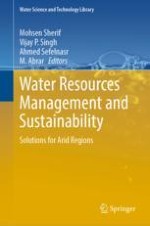2023 | OriginalPaper | Buchkapitel
5. Trends in Annual Maximum Flood Data in New South Wales Australia
verfasst von : S. M. Anwar Hossain, Ataur Rahman, Taha B. M. J. Ouarda
Erschienen in: Water Resources Management and Sustainability
Verlag: Springer Nature Switzerland
Aktivieren Sie unsere intelligente Suche, um passende Fachinhalte oder Patente zu finden.
Wählen Sie Textabschnitte aus um mit Künstlicher Intelligenz passenden Patente zu finden. powered by
Markieren Sie Textabschnitte, um KI-gestützt weitere passende Inhalte zu finden. powered by
